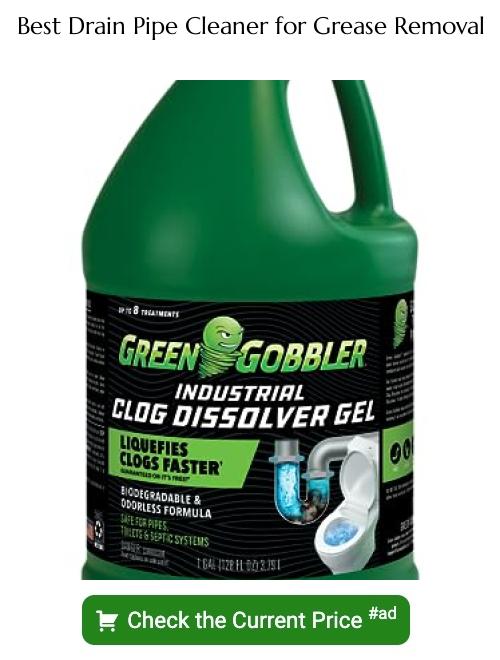Last updated on
Discover the effective methods to eliminate grease buildup from your kitchen drain pipes, ensuring a smooth flow and preventing future blockages.
We all love to indulge in delicious, oily foods, but our kitchen drain pipes may not share the same sentiment. Over time, grease buildup can clog our pipes and cause unpleasant odors.
Not only is this a nuisance, but it can also lead to costly plumbing repairs. Fortunately, there are simple and effective ways to remove grease from your kitchen drain pipes without resorting to harsh chemicals or calling a plumber.
In this article, we’ll explore some tried-and-true methods that will keep your drains flowing smoothly and your kitchen smelling fresh. So grab a cup of coffee (or tea) and let’s dive in!
What's Inside
Causes of Grease Accumulation
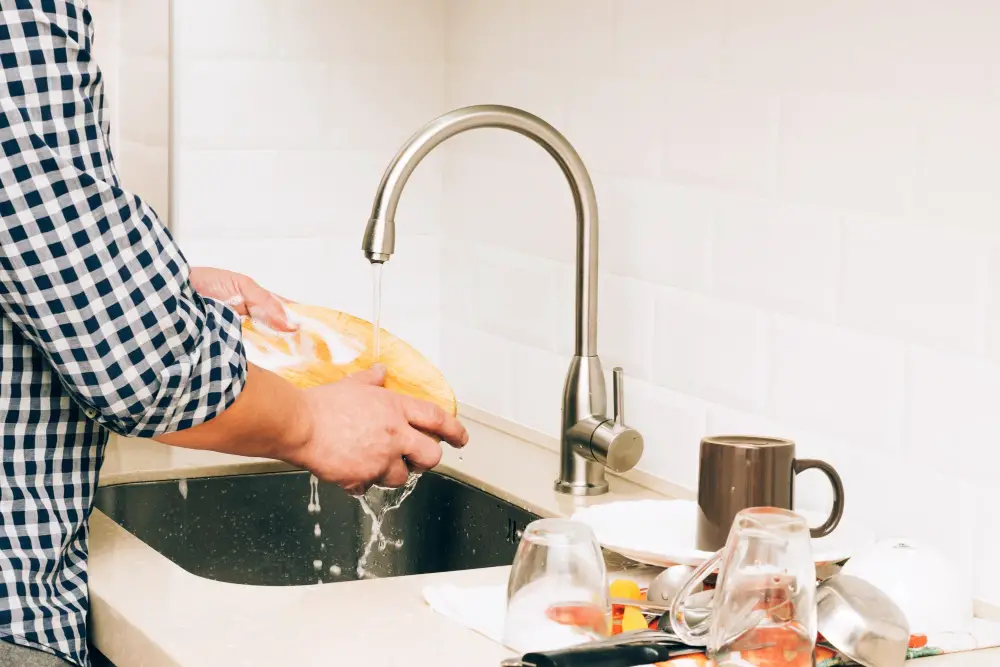
One of the primary causes of grease buildup is cooking with oil or fat, which can solidify and stick to the inside walls of your pipes over time. Pouring hot liquids such as coffee or tea down the drain may also contribute to grease accumulation.
Another factor that contributes to this issue is improper disposal of food waste. When you wash dishes or rinse off plates before putting them in the dishwasher, small bits of food particles often get washed down into your drains along with any remaining oils and fats on those dishes.
Furthermore, using soap products containing animal fats like lard and tallow can also cause greasy buildup in your kitchen sink’s drainage system.
It’s essential to understand these causes so you can take preventative measures against future blockages.
Identifying Grease Buildup
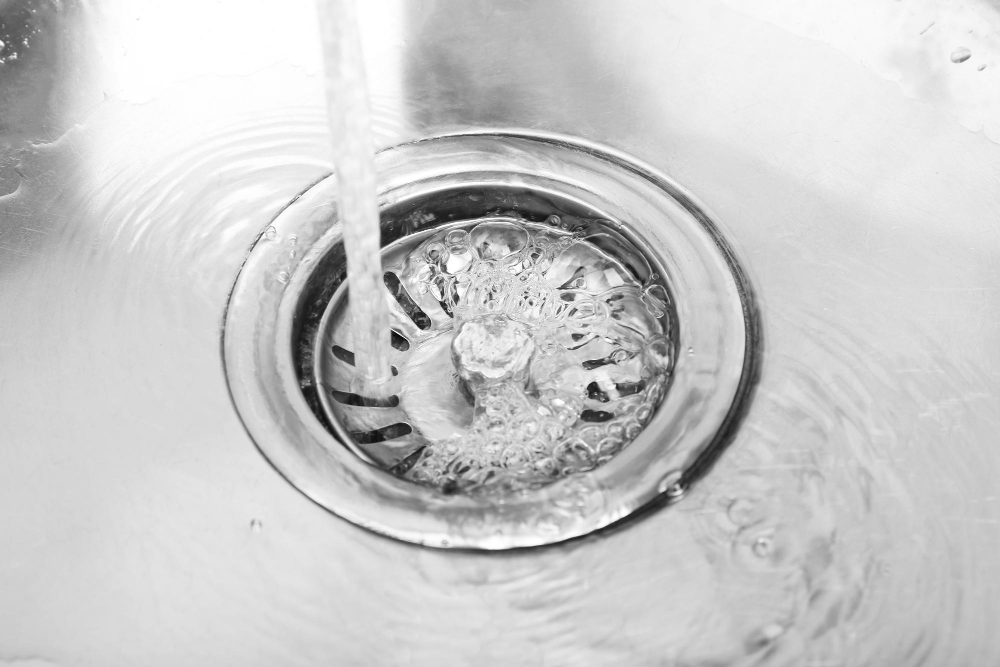
Grease can accumulate over time and cause blockages, leading to slow draining water or even complete clogs. One way to identify grease buildup is by observing how quickly water drains from your sink or dishwasher.
If you notice that the water takes longer than usual to drain, there may be a blockage caused by grease accumulation.
Another sign of greased pipes is an unpleasant odor emanating from your kitchen sink or dishwasher. This smell can be caused by food particles and other debris getting trapped in the accumulated grease.
You may also notice that when you pour hot water down the drain, it does not flow smoothly but instead backs up into the sink basin due to a blocked pipe.
Signs of Greased Pipes
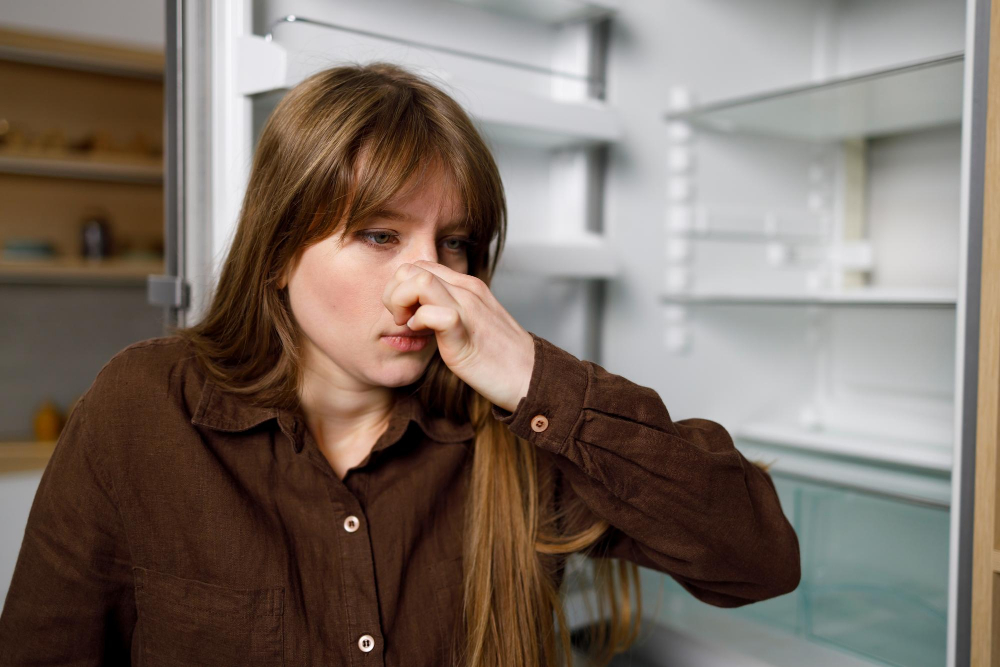
If you notice that water is taking longer than usual to drain from your sink, it could be an indication that there’s a blockage caused by grease accumulation. Another sign to look out for is unpleasant odors emanating from your drains or sink area.
Grease can trap food particles and other debris, leading to foul smells in your kitchen.
You may also hear gurgling sounds coming from the pipes when you run water down the sink or dishwasher. This sound occurs because air bubbles are trapped within the clogged pipe and are trying to escape through small openings around it.
If left unaddressed, these signs can lead to more severe problems such as complete blockages and even burst pipes due to increased pressure build-up behind them.
Tools Needed for Cleaning

Fortunately, you don’t need any specialized equipment or expensive gadgets to get started. Here are some basic items that will come in handy:
1. Rubber gloves: Protect your hands from harsh chemicals and bacteria.
2. Bucket: Catch any water that may spill out during cleaning.
3. Old towels or rags: Wipe up excess water and debris.
4. Plunger: Use a plunger for minor blockages before attempting other methods.
- Drain snake (optional): For more stubborn clogs, a drain snake can help break up solidified grease deposits inside pipes.
- Compressed air device(optional): A compressed air device is an effective tool for clearing blocked drains by blowing high-pressure air through them.
- Hydro sewer jet(optional): This is another powerful tool used by professionals to blast away tough clogs with high-pressure streams of water.
- Having these tools on hand will make the process much easier and efficient when tackling greasy kitchen drains at home without calling in professional help every time there’s a blockage issue!
DIY Grease Removal
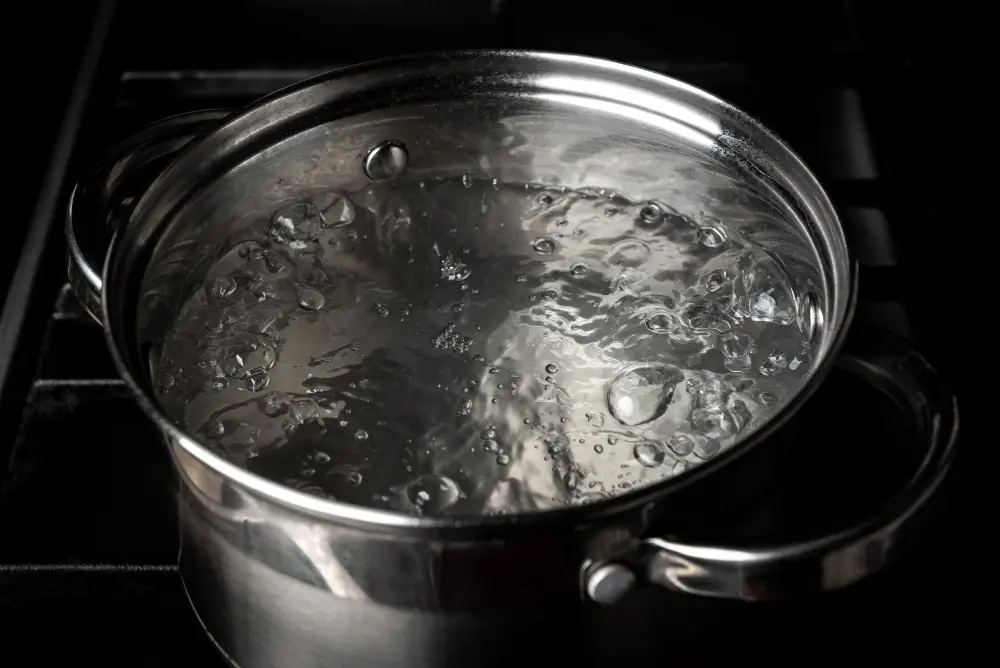
One of the simplest ways is by using boiling water. Boil a pot of water and pour it down the drain slowly, allowing it to work its way through the grease buildup.
Another effective method is by applying baking soda and vinegar. Mix half a cup of baking soda with half a cup of white vinegar in a bowl or measuring jug, then pour this mixture down your clogged drain immediately after mixing them together.
The chemical reaction between these two ingredients will create bubbles that help break up any greasy residue clinging onto your pipes’ walls.
You can also use hot water mixed with vinegar solution as an alternative to plain boiling water if you want more cleaning power without resorting to harsh chemicals or commercial cleaners.
These DIY methods are easy-to-follow solutions that require minimal effort but yield excellent results when done correctly.
Using Boiling Water
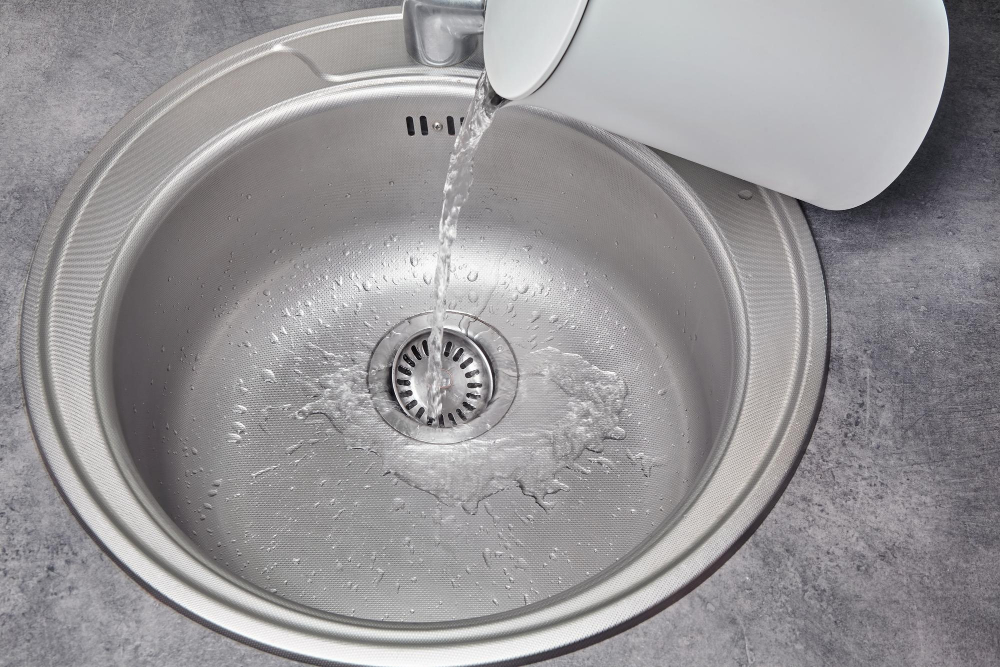
This method works best for mild cases of grease accumulation, but it can also be used as a preventive measure.
To use this technique, boil a pot or kettle of water on your stove. Once the water has reached boiling point, carefully pour it down the drain in two to three stages with intervals between each stage.
The hot temperature will melt away any greasy residue that may have accumulated in your pipes.
It’s important to note that you should only use this method if you have metal or ceramic pipes; plastic piping can warp under high temperatures and cause further damage. Avoid pouring boiling water directly onto porcelain sinks as they may crack due to thermal shock.
Using boiling water is an easy and cost-effective way to keep your kitchen drains free from grease buildup without resorting to harsh chemicals or calling a plumber.
Applying Baking Soda and Vinegar
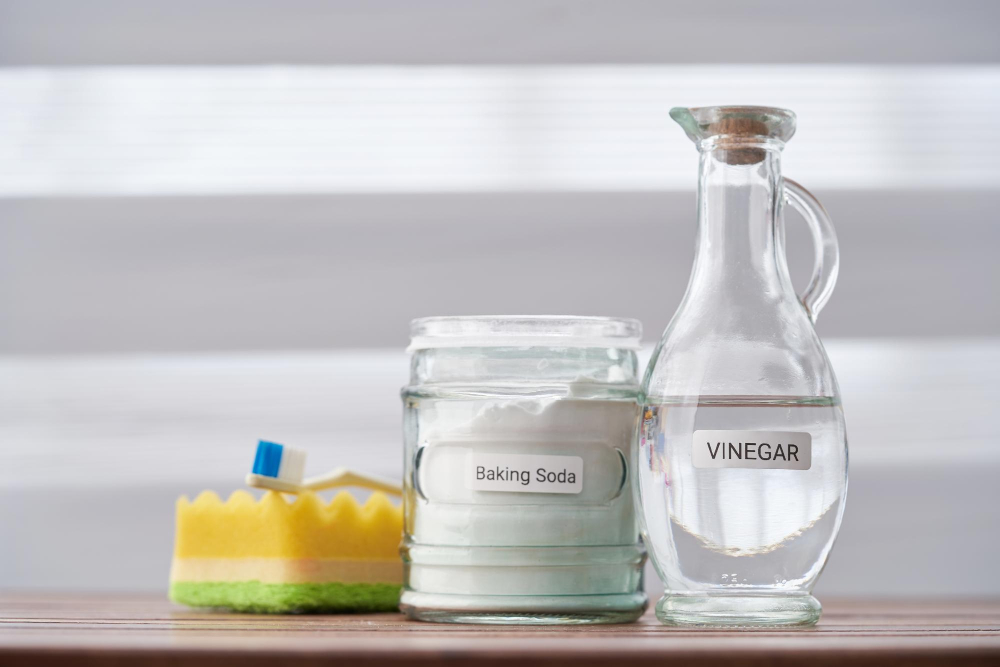
This natural solution is not only effective but also safe for your plumbing system.
To start, pour a pot of boiling water down the drain to loosen any debris. Then, sprinkle half a cup of baking soda into the drain followed by one cup of white vinegar.
The mixture will fizz up as it reacts with the grease in your pipes.
Let this sit for about 30 minutes before flushing it out with hot water. You can repeat this process once or twice a month to keep your drains clean and odor-free.
Hot Water and Vinegar Solution
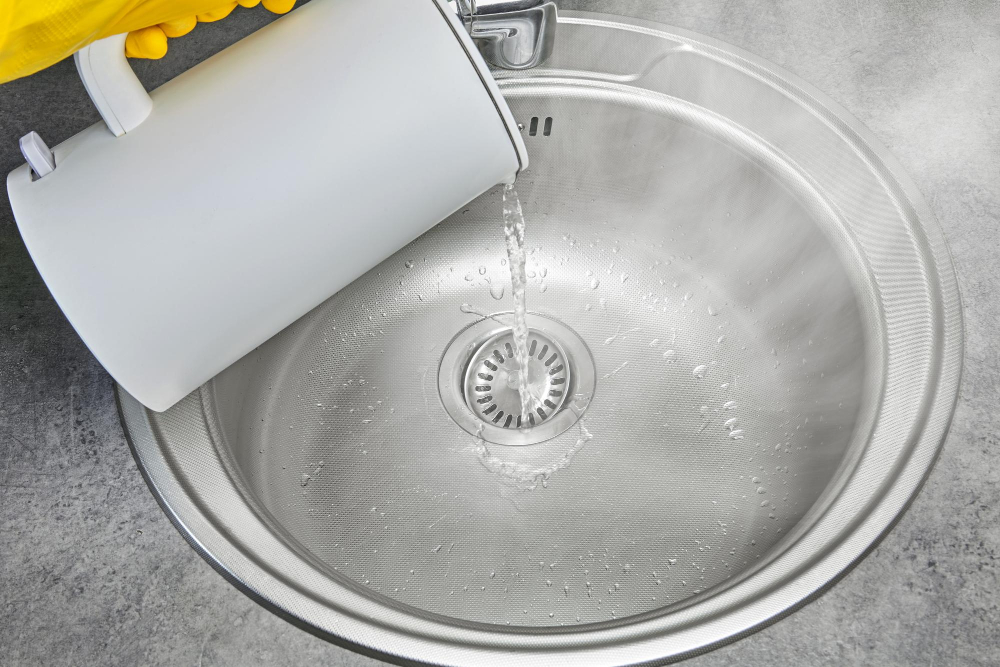
This method is not only eco-friendly but also inexpensive, making it an ideal choice for those on a budget. To use this technique, boil a pot of water on the stove or in the microwave.
Once boiling, pour half a cup of white vinegar down your drain followed by the hot water slowly to avoid splashing back up at you. The combination will break down any grease buildup that has accumulated in your pipes over time while deodorizing them as well.
Repeat this process once every few weeks to keep your drains flowing smoothly without any blockages caused by grease buildup. It’s important to note that if you have PVC pipes or older metal ones with corroded joints, do not use boiling water as it can cause damage; instead opt for warm tap water when using this method.
Compressed Air Technique
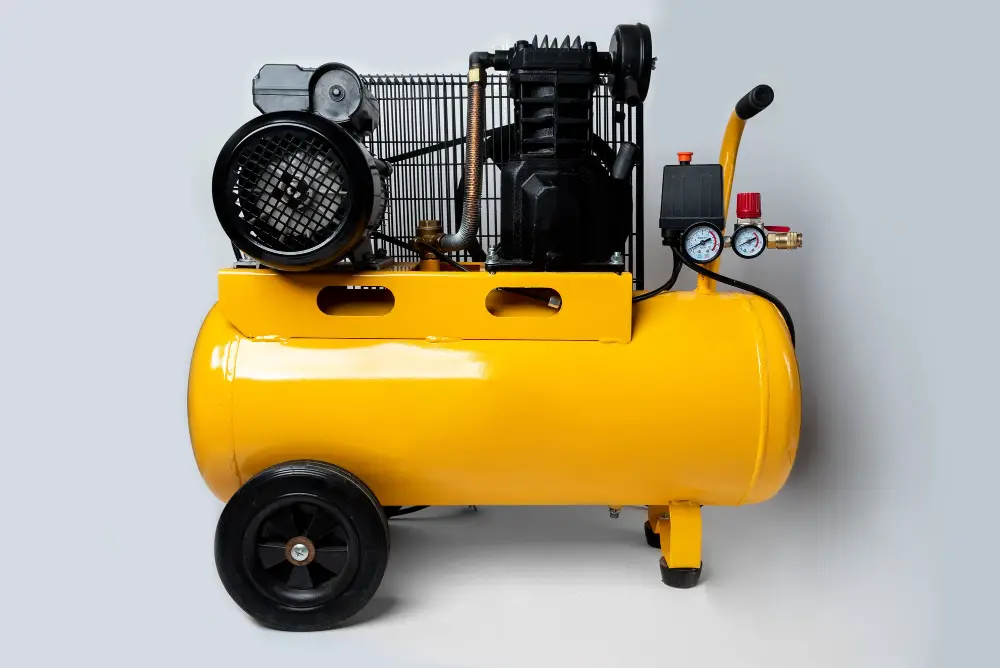
This technique involves using a high-pressure burst of air to dislodge any clogs or blockages in the pipe. To use this method, you will need an air compressor and a special attachment that fits onto your drain opening.
First, remove any standing water from the sink and insert the attachment into the drain opening. Turn on your air compressor and allow it to build up pressure before releasing a burst of compressed air into the pipe.
This powerful blast of air should be enough to push through any grease buildup or debris that may be causing blockages in your pipes. Repeat this process several times until you notice an improvement in water flow.
While this method can be highly effective, it’s important to exercise caution when using compressed air as it can cause injury if not handled properly. Always wear protective gear such as safety glasses and gloves when working with pressurized equipment.
Implementing Chemical Drain Cleaners
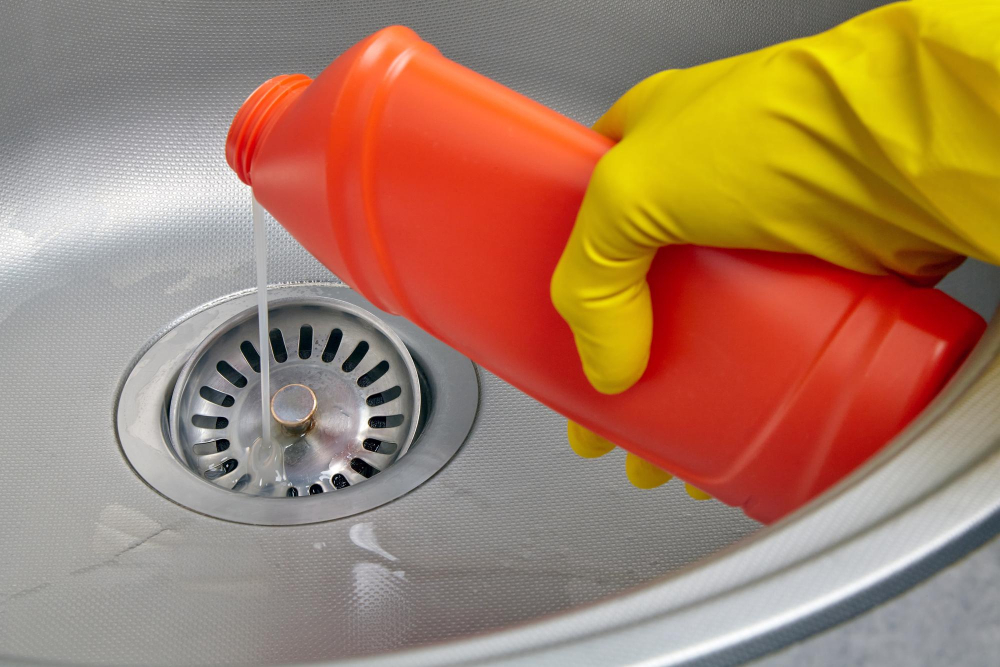
These products contain strong chemicals that dissolve the grease and other debris, allowing it to flow freely through the pipes. However, they can also be harmful to your plumbing system if used incorrectly or too frequently.
Before using chemical drain cleaners, make sure you read and follow the instructions carefully. Wear gloves and eye protection when handling these products as they can cause skin irritation or burns.
It’s important to note that chemical drain cleaners should only be used as a last resort after trying other methods such as boiling water or baking soda and vinegar solutions. Overuse of these products can damage your pipes over time by corroding them from within.
If you do decide to use a chemical cleaner, choose one specifically designed for removing grease buildup in kitchen drains. Avoid using generic all-purpose cleaners which may not be effective against stubborn greasy clogs.
Enlisting a Plunger or Drain Snake
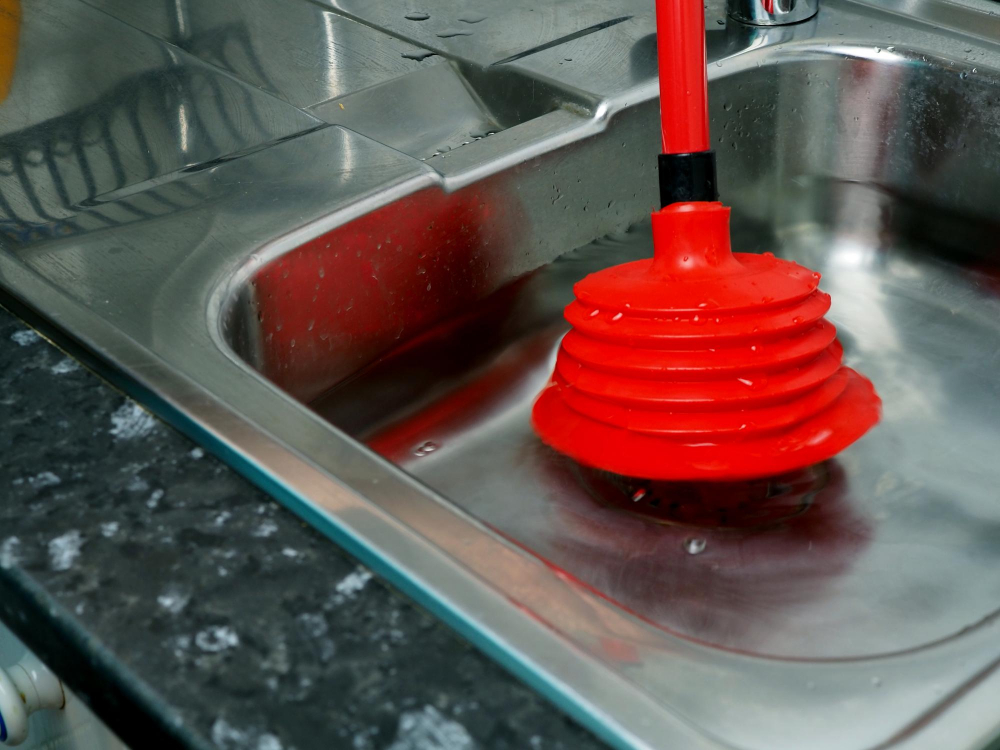
A plunger is an effective tool for removing blockages caused by grease and other debris. To use a plunger, fill your sink with enough water to cover the head of the plunger and place it over your drain opening.
Push down on the handle firmly but gently until you feel resistance, then pull up quickly while maintaining suction.
Another option is using a drain snake or auger which can reach deeper into pipes than plungers can. Inserting this flexible cable into your pipe will help break apart any clogs that are causing slow drainage in your kitchen sink.
Hydro Sewer Jet
This technique involves using high-pressure water to blast away any blockages, leaving your pipes clean and clear. Hydro jetting can be done by professional plumbers or rented equipment for DIY cleaning.
The process starts with the insertion of a specialized nozzle into the affected pipe, which sprays water at pressures up to 4000 PSI (pounds per square inch). The force of this pressure is strong enough to break down even the toughest grease deposits in your drainpipes.
One advantage of hydro sewer jetting over other methods is that it doesn’t require harsh chemicals that could damage your plumbing system or harm the environment. It’s also faster than traditional snaking techniques since it clears out all debris in one go.
However, hydro sewer jetting should only be performed by professionals as improper use may cause further damage to already weakened pipes or lead to injury due to its high-pressure nature.
Unblocking Outside Grease-Blocked Drains

This can happen when we pour cooking oil or grease down our drains, which then solidifies and sticks to the walls of the pipes. To unblock an outside grease-blocked drain, start by removing any debris from around the opening with gloves on.
Then use a garden hose with high pressure water flow and insert it into the pipe as far as possible while turning on full blast water pressure for several minutes until all blockages are cleared out.
It’s important to note that prevention is key when it comes to avoiding blocked drains caused by grease buildup. Avoid pouring cooking oils or fats down your kitchen sink and instead dispose of them in a sealed container before throwing them away in regular trash bins.
Treating Grease Traps
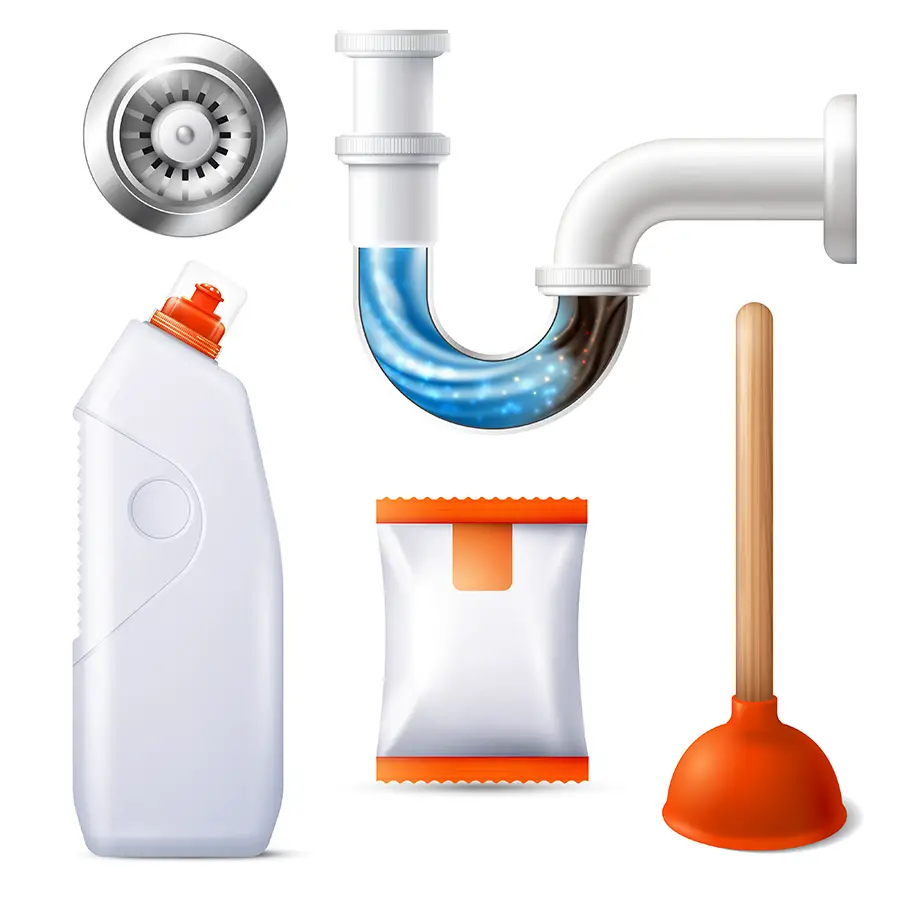
Grease traps are designed to capture and contain fats, oils, and greases (FOGs) before they enter the sewer system. However, these traps can become clogged with FOGs over time if not maintained properly.
To treat your grease trap effectively, it’s essential to follow some simple steps regularly. First of all, make sure that the trap is cleaned out at least once every three months by a licensed professional plumber who will dispose of the waste in an environmentally friendly manner.
Secondly, consider using biological additives that break down FOGs naturally without harming your plumbing system or polluting waterways. These products contain live bacteria cultures that digest organic matter such as food particles and other debris found in wastewater systems.
Lastly but most importantly is educating staff on proper disposal practices for cooking oil and other greasy substances used during food preparation so they don’t end up down the drain where they can cause blockages in pipes leading to costly repairs later on.
Preventing Grease Buildup

The best way to prevent grease accumulation is by being mindful of what goes down the drain. Avoid pouring cooking oil, fat, and grease down the sink as they solidify when cooled and can cause blockages in your pipes.
Instead of dumping leftover oil or fat into the sink, pour it into a container with a lid and dispose of it in the trash once cooled. You can also use paper towels or napkins to wipe excess oils off plates before washing them.
Another effective way is by installing a mesh strainer over your kitchen sink drains; this will catch food particles before they go down the pipe.
Lastly, regular maintenance such as cleaning out your garbage disposal unit with ice cubes or citrus peels helps keep things running smoothly while preventing unpleasant odors from developing.
Disposing of Grease Properly
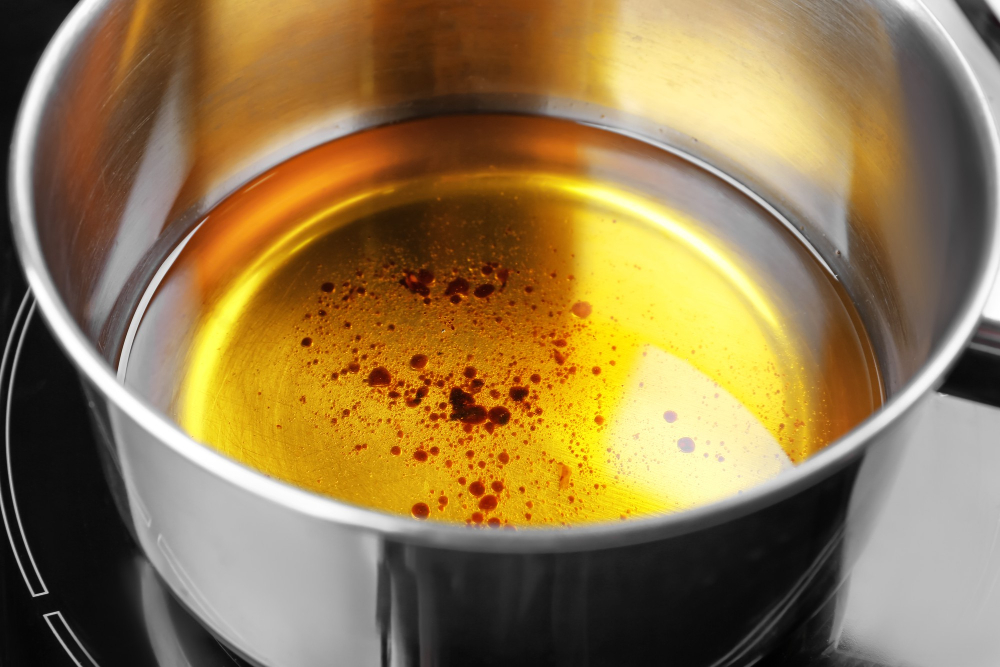
Pouring hot oil or fat down the sink is one of the main causes of clogged drains and can harm wildlife if it ends up in our waterways. Instead, let any leftover cooking oil cool down before pouring it into a sealable container and throwing it away in your regular trash bin.
Another option is recycling used cooking oil by taking it to a local collection center or participating restaurant. The collected oils are then converted into biodiesel fuel for vehicles or heating homes.
By disposing of grease properly, you not only prevent blockages but also contribute positively towards environmental conservation efforts.
Removing grease buildup from kitchen drain pipes doesn’t have to be complicated nor expensive.
Environmental Importance
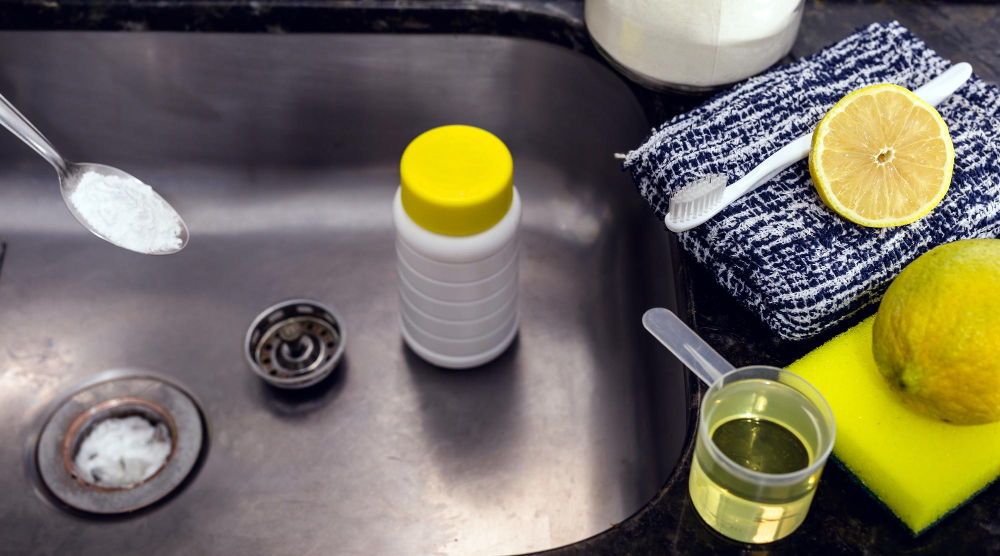
When we pour grease down our drains, it doesn’t just disappear into thin air. Instead, it can accumulate in our sewer systems and cause blockages that lead to sewage backups or overflows.
These issues not only pose health risks but also harm aquatic life when they reach rivers or oceans. Chemicals used to dissolve grease can be harmful if they end up contaminating water sources.
By taking steps to prevent and remove grease buildup from your kitchen drain pipes using eco-friendly methods like baking soda and vinegar solutions instead of harsh chemicals, you’re doing your part for a cleaner environment while keeping your plumbing system running smoothly.
Calling a Professional Plumber
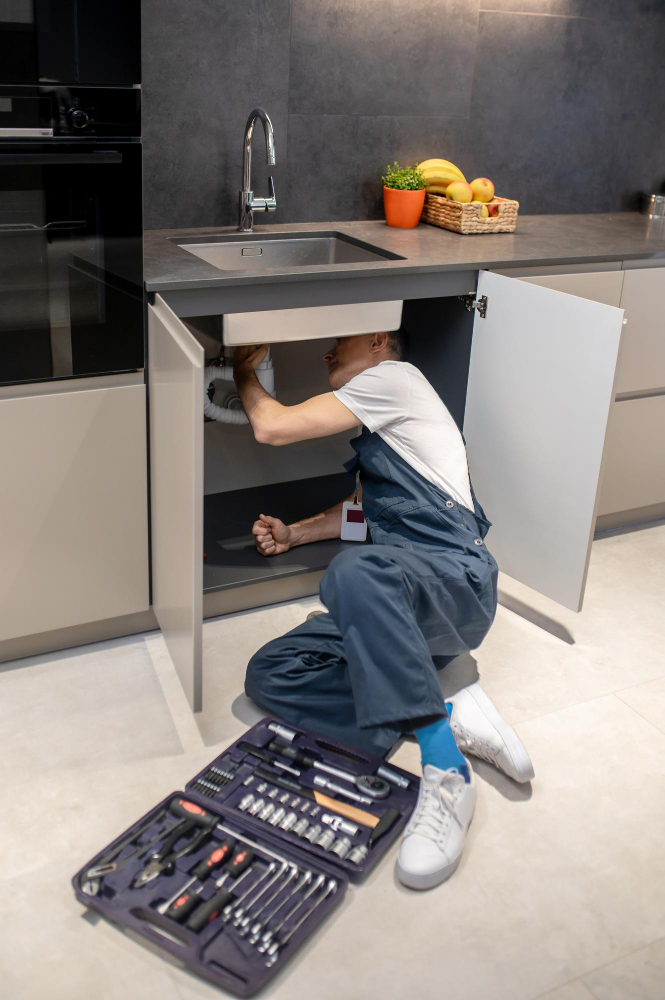
A licensed plumber has specialized tools and equipment that can effectively remove stubborn blockages without causing damage to your plumbing system.
When calling a professional plumber, make sure they are experienced in dealing with grease buildup issues. Ask for references or read online reviews before hiring them.
Also, inquire about their pricing structure upfront so there are no surprises when you receive the bill.
Remember that prevention is key when it comes to avoiding future clogs caused by grease accumulation. Regularly cleaning your drains using one of the methods outlined above will help keep them flowing smoothly and prevent costly repairs down the line.
Removing grease from kitchen drain pipes requires patience and persistence but is ultimately achievable with proper techniques at hand.
FAQ
What dissolves kitchen grease in pipes?
A 50:50 mix of boiling hot water and white vinegar dissolves kitchen grease in pipes by melting the fat, removing it from the pipe lining, and carrying it away with the water flow.
How do you degrease a kitchen drain pipe?
To degrease a kitchen drain pipe, use a combination of ½ cup baking soda and ½ cup white vinegar, let it stand for several minutes, and then pour five to six cups of boiling water into the drain.
What are some natural solutions for clearing grease buildup in drain pipes?
Natural solutions for clearing grease buildup in drain pipes include using a mixture of hot water, baking soda, and vinegar.
Can professional drain cleaning services effectively remove kitchen grease from pipes?
Yes, professional drain cleaning services can effectively remove kitchen grease from pipes.
What preventative measures can be taken to minimize the accumulation of grease in kitchen drain pipes?
To minimize grease accumulation in kitchen drain pipes, regularly dispose of fats, oils, and grease separately, and use hot water and detergent to clean dishes and utensils.
